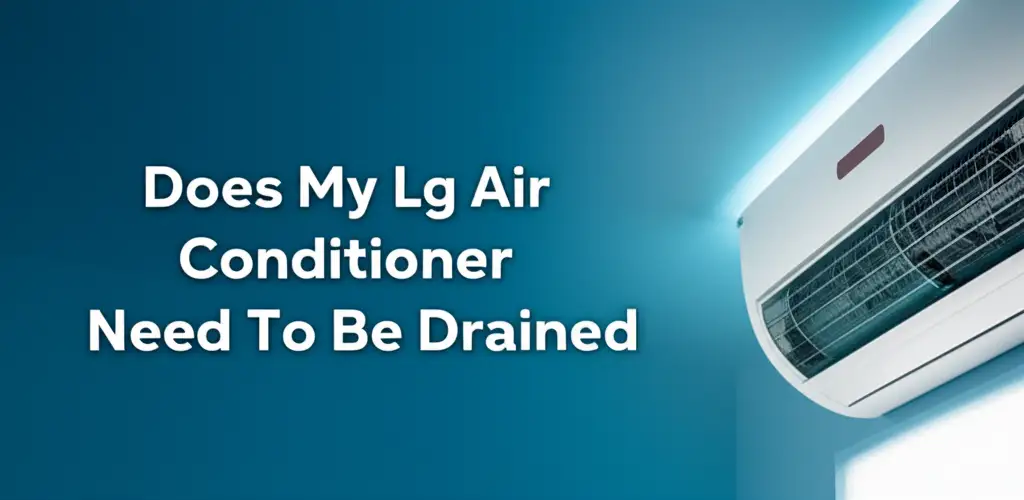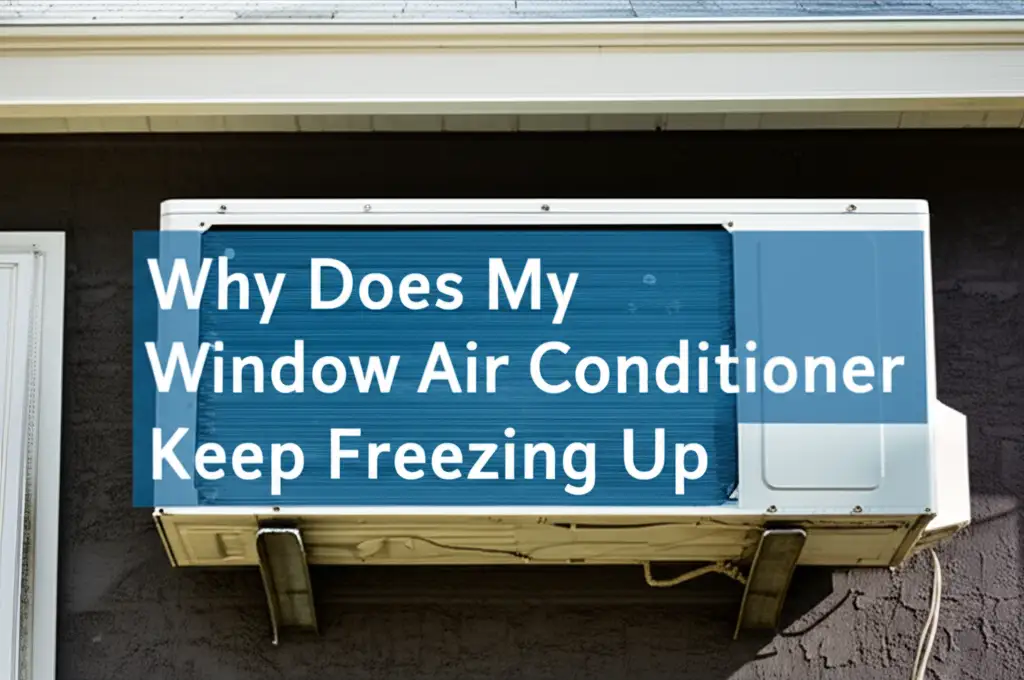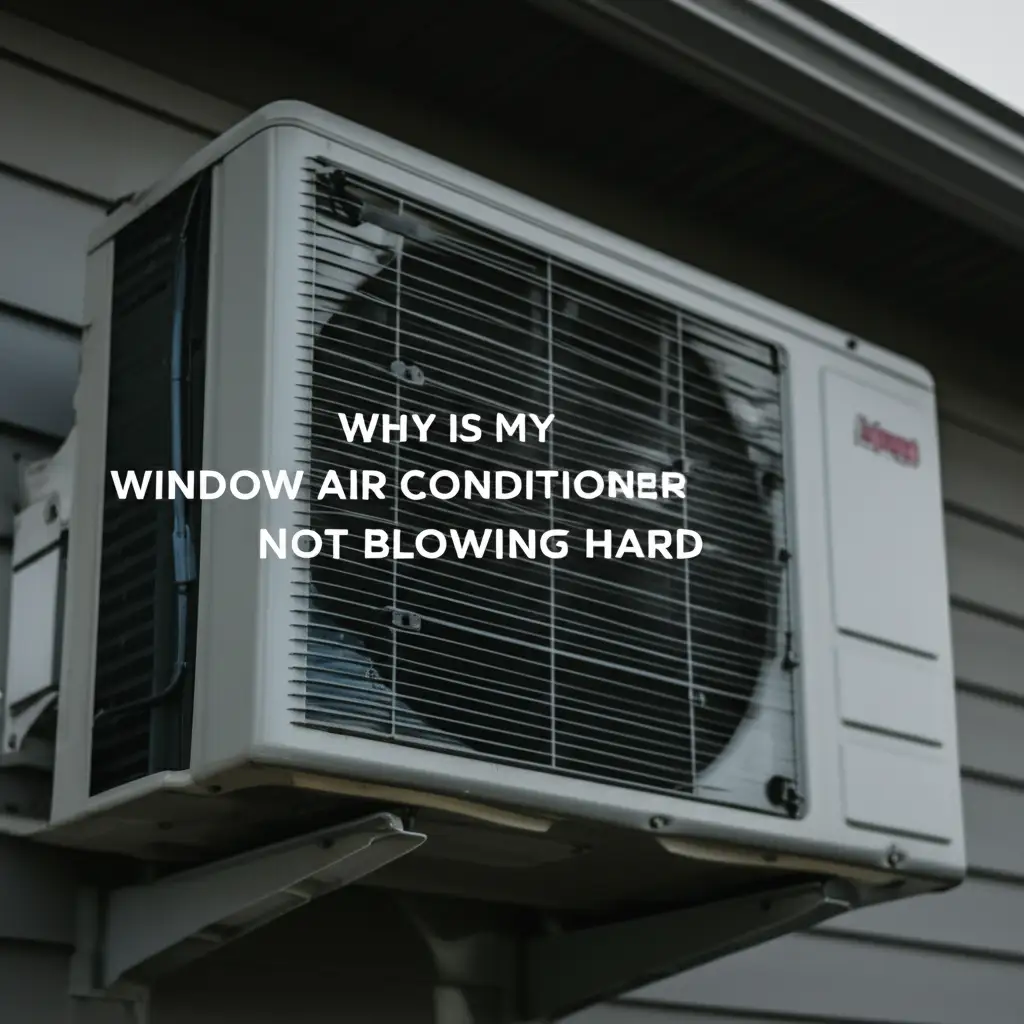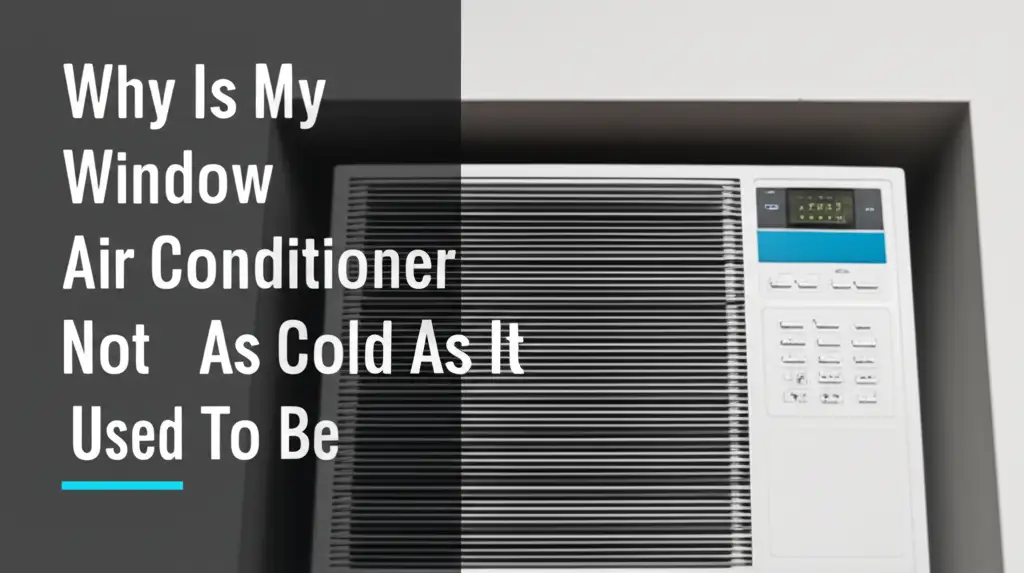· Katria Melrose · Home Appliances · 21 min read
Why My Portable Air Conditioner Is Not Cooling
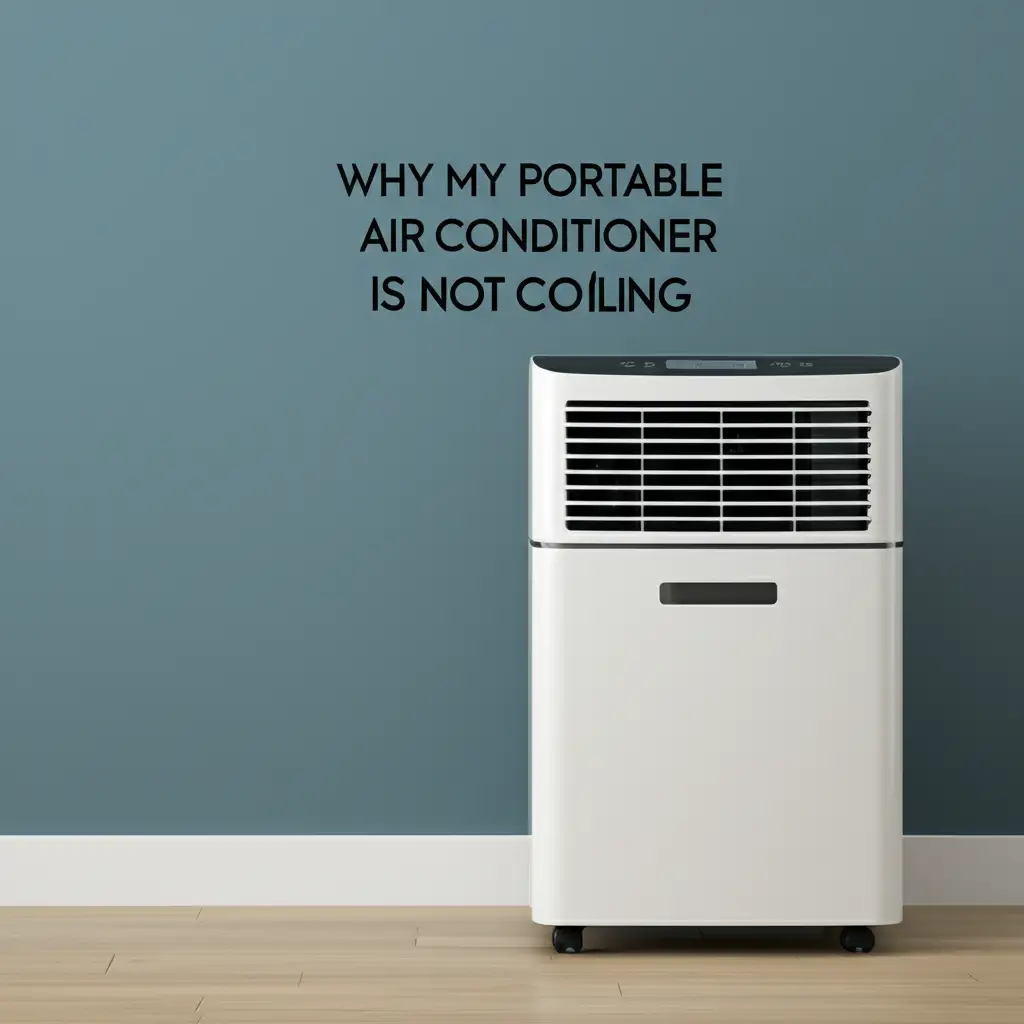
Portable AC Not Cooling? Fix Your Air Conditioner Problems
Summer heat can be intense. There is nothing worse than turning on your portable air conditioner, expecting cool relief, and getting only warm air. When your portable air conditioner is not cooling, it is frustrating. I know this feeling well, having dealt with my own unit failing on a scorching day.
Many simple issues can stop your portable AC from cooling effectively. These issues often involve maintenance, setup, or environmental factors. Understanding these problems helps you fix your unit quickly. This article will explore the main reasons your portable air conditioner might not be cooling. We will discuss easy steps you can take to troubleshoot and fix common problems. You can enjoy cool, comfortable indoor air again soon.
Takeaway
- Check Venting: Ensure the exhaust hose is properly connected and sealed to a window kit. Block all air leaks around the window.
- Clean Filters: Regularly clean or replace air filters. Clogged filters restrict airflow and reduce cooling.
- Manage Water Drainage: Empty the water tank frequently or ensure continuous drainage works. Excess water can trigger shut-offs.
- Inspect Coils: Clean evaporator and condenser coils for dirt and dust buildup. Dirty coils reduce heat exchange.
- Assess Room Conditions: Close windows and doors. Insulate the room if possible. Ensure the AC unit is sized correctly for your space.
A portable air conditioner often fails to cool due to improper venting, clogged air filters, dirty evaporator coils, or issues with water drainage. Minor electrical glitches or a lack of refrigerant can also prevent the unit from producing cold air, requiring a systematic check of these components.
Improper Venting Stops Cooling Performance
The most common reason a portable air conditioner is not cooling effectively is poor venting. A portable AC removes hot air from your room. It sends this hot air outside through an exhaust hose. If this hose is not connected properly, or if there are leaks, the hot air comes back into your room. This makes your portable AC work harder without cooling your space.
You must ensure the exhaust hose is secure. Check the window seal kit. There should be no gaps where warm air can enter. Even a small gap can reduce cooling power significantly. Using a window kit that fits your window well helps create an airtight seal. I have seen many units struggle because of a poorly sealed window.
Sometimes, the hose itself can be too long or bent sharply. This restricts airflow. A restricted hose makes the unit inefficient. The hot air cannot escape easily. Ensure your hose is as short as possible and has no kinks. You want a clear path for the hot air to exit your room. Proper venting is key to efficient cooling for any portable AC unit. Learn how to vent a portable air conditioner without a window if traditional methods are not an option.
Exhaust Hose Connection Check
Always check the connection of your exhaust hose. It must be firmly attached to the portable AC unit. It also needs to be secure in the window kit. Loose connections let hot air escape back into your room. This defeats the purpose of the air conditioner.
Window Seal Integrity
The window kit must seal completely. Gaps around the window kit allow outside hot air to leak in. Use foam insulation or tape to seal any remaining gaps. A good seal keeps your room isolated from outside heat. This helps your AC cool properly.
Hose Length and Kinks
Keep the exhaust hose short and straight. A long hose makes the unit work harder. It loses more heat as air travels through it. Kinks or sharp bends in the hose block airflow. This prevents hot air from exiting efficiently. An unobstructed, shorter hose improves cooling.
Clogged Air Filters and Dirty Coils Restrict Airflow
Dirty components are a major reason your portable air conditioner is not cooling. The air filter catches dust, pet dander, and other particles. Over time, this filter gets clogged. A clogged filter blocks airflow. When airflow is blocked, the unit cannot pull enough warm air from the room. It also cannot release cool air effectively. This makes the portable AC less efficient or stops it from cooling altogether.
The evaporator coils also get dirty. These coils absorb heat from the air. If dust and grime cover them, they cannot absorb heat efficiently. The condenser coils, which release heat, can also get dirty. Dirty coils lead to poor heat exchange. This means your unit struggles to produce cold air. Regular cleaning of both the filter and the coils is essential for maintaining cooling performance. I always make sure to clean mine every few weeks during heavy use. Here are detailed steps on how to clean your portable air conditioner.
Filter Maintenance is Crucial
Your portable AC’s air filter needs regular cleaning. A dirty filter restricts the flow of air. This reduces the unit’s cooling capacity. Check your filter every two weeks during periods of heavy use.
To clean it, remove the filter and rinse it under lukewarm water. You can use a mild detergent if it is very dirty. Let it air dry completely before putting it back. A clean filter allows for optimal airflow. This helps your AC cool your room efficiently. Learn more about maintaining your portable AC’s water tank by cleaning it regularly.
Evaporator Coil Cleaning
The evaporator coils absorb heat from your room’s air. Dust and dirt can build up on these coils. This layer of grime acts as an insulator. It prevents the coils from absorbing heat properly. The portable AC then struggles to cool the air.
To clean them, first unplug the unit. Then, use a soft brush or a vacuum with a brush attachment. Gently remove any dust or debris from the coils. For stubborn dirt, you can use a coil cleaning spray. Make sure the spray is safe for AC coils. Clean coils improve heat transfer and cooling.
Condenser Coil Cleaning
Condenser coils release heat from the refrigerant to the outside air. If these coils are dirty, they cannot release heat efficiently. This causes the pressure inside the unit to rise. It also reduces cooling performance. Overheated components can even lead to unit damage.
Like evaporator coils, condenser coils can be cleaned with a soft brush or vacuum. Always unplug the unit before cleaning. Regular cleaning of both sets of coils ensures your portable AC runs at its best. It maintains strong cooling power.
Water Drainage Issues and Full Tanks
Portable air conditioners collect water as they dehumidify the air. Most units have an internal water tank. When this tank fills up, many portable ACs stop cooling. This is a safety feature. It prevents water overflow and potential damage. If your portable air conditioner is not cooling, check the water tank. It might simply be full and needs emptying.
Some units offer continuous drainage. This means you connect a hose to a drain outlet. The water then flows out continuously. If you use continuous drainage, check the hose for kinks. Make sure the hose is sloped downwards. This ensures proper water flow. A clogged or improperly sloped drainage hose can cause water to back up. This can trigger the full tank sensor, stopping cooling. I once forgot to check the drain hose, and my unit stopped cooling because of a minor kink. If your unit is not draining water, read this guide for solutions.
Emptying the Water Tank
Portable air conditioners remove moisture from the air. This moisture collects in an internal tank. When this tank becomes full, the unit often stops cooling. It might display a “full” indicator light. To fix this, simply unplug the unit. Then, locate the drain plug at the bottom. Place a pan or bucket underneath. Remove the plug to empty the water. Reinsert the plug firmly before restarting the unit. Emptying the tank regularly prevents cooling interruptions.
Continuous Drainage Check
Many portable AC units offer continuous drainage. This allows water to drain automatically through a hose. If you use this feature, check the drainage hose. Ensure it is not kinked or clogged. The hose must also have a downward slope. This allows gravity to pull the water out. If the hose is blocked or not sloped, water can back up. This can make the unit think the tank is full. It then stops cooling. Correct hose setup ensures constant operation. If your portable air conditioner keeps filling up with water quickly, you might want to investigate the humidity in your room.
Float Switch Malfunction
Inside the water tank, a float switch detects the water level. If this switch malfunctions, it might incorrectly signal that the tank is full. This happens even when the tank is empty. A faulty float switch will prevent the unit from cooling. You might need to gently clean the switch area. Make sure it moves freely. If it is still faulty after cleaning, it might need replacement. A properly working float switch ensures correct water level detection. This allows for continuous cooling.
Incorrect Sizing or Poor Placement Hinders Cooling
The size of your portable air conditioner matters. An AC unit needs enough power, measured in BTUs (British Thermal Units), to cool your specific room size. If your portable air conditioner is not cooling, it might be too small for the room. A unit that is too small will run constantly but never reach your desired temperature. It cannot overcome the heat load.
Placement also plays a significant role. Place your portable AC in an area with good airflow. Do not block the air intake or exhaust vents. Keep it away from direct sunlight. Sunlight can add extra heat to the unit itself. Also, ensure the room is sealed. Keep windows and doors closed. Avoid placing the unit near heat-generating appliances. These factors make your portable AC work harder. This reduces its ability to cool effectively. I learned this the hard way when I first placed my unit too close to a sun-drenched window.
Room Size and BTU Matching
Matching your portable AC’s BTU rating to your room size is important. If your unit has too few BTUs for a large room, it will struggle. It will run continuously but never cool the space adequately. This results in minimal temperature drop. Measure your room’s square footage. Check the manufacturer’s recommended BTU range. An undersized unit will always feel like it is not cooling.
Unit Placement and Airflow
Proper placement ensures optimal performance. Place your portable AC in an open area. Ensure its air intake and exhaust vents are not blocked. Keep the unit away from walls or furniture. Blocking airflow reduces efficiency. It forces the unit to recirculate hot air. This stops it from cooling the room. Good airflow around the unit is essential for heat exchange. You can check if placing a portable air conditioner on carpet is suitable for your setup.
External Heat Sources
External heat sources can overwhelm your portable AC. Direct sunlight streaming through a window warms the unit itself. It also heats the room. Appliances like TVs, computers, or lamps generate heat. Keep your portable AC away from these sources. Close blinds or curtains to block sunlight. Reducing the heat load helps your AC cool the room faster. It also helps it maintain the set temperature.
Refrigerant Leaks and Compressor Issues
If your portable air conditioner is not cooling, and you have checked all the basic issues, the problem might be more serious. Portable AC units use refrigerant to cool the air. Refrigerant cycles through coils, absorbing and releasing heat. If there is a leak in the refrigerant lines, the amount of refrigerant decreases. This causes the unit to lose its cooling power. A low refrigerant level means the AC cannot absorb heat efficiently. The air coming out will not be cold.
Compressor problems are another possibility. The compressor pumps the refrigerant through the system. If the compressor fails or is weak, the refrigerant cannot circulate properly. This also leads to a lack of cooling. You might hear strange noises from the unit, or it might not turn on at all. Refrigerant leaks and compressor issues usually require professional repair. These are not DIY fixes. You should contact a qualified technician for these problems.
Low Refrigerant Levels
Refrigerant is the cooling agent in your AC unit. If your portable air conditioner is not cooling, low refrigerant is a possible cause. This usually happens due to a leak in the sealed system. When refrigerant levels are low, the unit cannot absorb heat effectively. The air coming out will feel warm, not cold. You might hear a hissing sound. This indicates a leak. A low refrigerant level requires a technician to find and fix the leak. Then, they will recharge the system.
Compressor Malfunction
The compressor is the heart of your AC unit. It pressurizes the refrigerant, making the cooling cycle possible. If the compressor fails, the unit will not cool at all. You might hear a humming sound, but no cool air will come out. Sometimes, the compressor might start and then quickly shut off. This often indicates an internal problem. Compressor issues are complex. They usually require professional diagnosis and repair. Replacing a compressor is often expensive. Sometimes, it is more cost-effective to replace the entire unit.
Electrical Issues Affecting Cooling
Electrical problems can also cause your portable AC to stop cooling. A faulty power cord or plug can prevent the unit from getting enough power. A tripped circuit breaker will stop the unit completely. Internal wiring issues or a bad capacitor can prevent the compressor from starting. The capacitor provides the initial electrical boost to the compressor motor. If it fails, the compressor cannot run. Always check the power supply first. Ensure the unit is plugged into a working outlet. Reset the circuit breaker if it is tripped. Any internal electrical problems need a qualified technician to fix.
Electrical Problems and Sensor Malfunctions
Sometimes, your portable air conditioner is not cooling due to electrical issues or faulty sensors. A unit needs a steady power supply to operate effectively. If the power cord is damaged, or the outlet is faulty, the AC might not get enough power. It might turn on but fail to cool. Always check that the unit is fully plugged in. Test the outlet with another appliance. A tripped circuit breaker can also cut power to your AC. If the unit suddenly stops, check your home’s breaker box.
Temperature sensors play a vital role in cooling. These sensors tell the unit the room temperature. They also monitor the temperature of the coils. If a sensor is faulty, it can give incorrect readings. The AC unit might think the room is already cool. It then stops the compressor, even when the room is warm. This prevents proper cooling. Sensor issues can be difficult to diagnose without specialized tools. If basic troubleshooting does not work, it might be a sensor problem. Sometimes, a portable air conditioner turns off by itself if there’s an electrical issue or an internal fault.
Power Supply Check
First, confirm your portable AC receives adequate power. Make sure the unit is plugged firmly into a working electrical outlet. Avoid using extension cords. They can cause voltage drops or overheat. Check your home’s circuit breaker. A dedicated circuit is best for portable ACs. If the breaker trips frequently, it indicates an issue. The issue could be with the AC drawing too much power. It could also be with your home’s electrical system. A steady power supply is crucial for cooling.
Faulty Temperature Sensors
Portable ACs use temperature sensors to regulate cooling. An ambient temperature sensor reads the room’s temperature. A coil sensor monitors the temperature of the evaporator coils. If either sensor malfunctions, the unit receives incorrect data. The AC might believe the room is cooler than it is. It might then stop the compressor prematurely. This results in warm air. Sensor issues often require a technician. They can diagnose and replace faulty sensors. Accurate temperature readings are vital for effective cooling.
Control Panel and Remote Issues
Sometimes, the problem is simpler. A faulty control panel or a dead remote can prevent proper settings. You might not be able to set the desired temperature. You might not be able to switch to cool mode. Check the batteries in your remote first. Try using the physical control panel buttons on the unit. If the control panel itself is unresponsive, there might be an internal electrical issue. This could be a loose connection or a damaged circuit board. A non-responsive control panel can prevent the unit from cooling.
Environmental Factors and Room Conditions
Even a perfectly functioning portable air conditioner can struggle in challenging environmental conditions. The outside temperature significantly impacts your unit’s ability to cool. If it is extremely hot outside, your AC works much harder. It might not be able to bring the room temperature down as much as you expect. High humidity also adds to the heat load. Your unit must remove moisture from the air. This process uses energy and reduces cooling capacity.
Your room’s insulation and layout also matter. Open windows or doors allow hot outside air to constantly enter your space. Poorly insulated walls or large, sunny windows let a lot of heat in. This overwhelms your portable AC. It will run continuously but never achieve a comfortable temperature. Ensure your room is sealed as much as possible. Close all openings. Use curtains or blinds to block direct sunlight. Creating a well-sealed and insulated environment helps your portable AC cool effectively.
High Ambient Temperature
Portable AC units have limits. If the outside temperature is extremely high, your unit may struggle. It works harder to dissipate heat. This reduces its overall cooling capacity. Check your unit’s operating temperature range in the manual. Running it in conditions beyond this range can reduce performance. It can also cause the unit to shut down. Cooling large spaces in very hot climates is challenging for smaller portable units.
Room Sealing and Insulation
An unsealed room wastes your portable AC’s efforts. Open windows, doors, or poor insulation allow hot air to enter constantly. This hot air replaces the cool air your unit produces. Ensure all windows and doors are closed tightly. Use weatherstripping or caulk to seal gaps. Heavy curtains or blinds can block sunlight. Good room sealing makes your AC work efficiently. It helps maintain the desired temperature.
Humidity Levels
High humidity makes a room feel hotter than it is. Your portable AC not only cools the air but also removes moisture. This dehumidification process uses part of the unit’s cooling capacity. In very humid environments, the AC spends more energy removing water. This leaves less capacity for cooling the air. Running a separate dehumidifier in extremely humid conditions can help your AC cool more effectively. It reduces the overall load on your unit.
Troubleshooting Your Portable AC - Step-by-Step
When your portable air conditioner is not cooling, a systematic approach helps. Do not panic. Start with the easiest checks first. I always begin by looking at the power connection. Is it plugged in firmly? Is the circuit breaker fine? These simple steps can resolve many issues quickly. Then, move on to maintenance. Check and clean the air filter. This is a common culprit. A clogged filter severely limits cooling.
Next, inspect the exhaust hose. Make sure it is securely attached. Ensure there are no kinks. Check the window seal for any gaps. These small leaks can let a lot of hot air back in. Finally, consider the water drainage. The tank might be full. Empty it and see if the cooling returns. If these steps do not fix the problem, you might have a more complex issue. It could be a refrigerant leak or compressor problem. At that point, contacting a professional is the best next step.
Start with Power and Basic Settings
Before anything else, check the power. Make sure the unit is fully plugged into a functional outlet. Check your home’s circuit breaker. Sometimes, a simple power reset can resolve glitches. Confirm the unit is set to “Cool” mode. Ensure the temperature setting is lower than the current room temperature. Check fan speed; a higher fan speed might feel like less cooling, but it moves more air.
Perform Routine Maintenance Checks
Regular maintenance prevents many cooling issues. Clean your air filter every two weeks during use. Dirty filters block airflow. This reduces cooling efficiency. Check the evaporator and condenser coils for dust and debris. Gently clean them with a soft brush or vacuum. Also, ensure the water tank is empty. If using continuous drainage, check the hose for clogs or kinks. These steps maintain optimal performance.
Inspect Venting System Thoroughly
The exhaust system is vital for cooling. Check the exhaust hose for damage. Ensure it is securely attached to the unit. Also check its connection to the window kit. Seal any gaps around the window kit using foam or tape. Hot air returning to the room prevents cooling. Make sure the hose is as short and straight as possible. Avoid sharp bends that restrict airflow.
Assess Room Environment
Consider your room’s conditions. Is the room too large for your AC’s BTU rating? Are windows and doors closed? Is there direct sunlight hitting the unit or windows? High ambient temperatures and humidity levels can overwhelm the unit. Close curtains or blinds. Try to minimize heat sources in the room. A well-sealed and insulated room helps your portable AC cool effectively.
When to Call a Professional
If you have tried all troubleshooting steps and your portable air conditioner is still not cooling, it is time for professional help. Issues like refrigerant leaks or compressor failure are complex. They require specialized tools and expertise. A certified HVAC technician can diagnose and fix these problems safely. Do not attempt to fix refrigerant or compressor issues yourself. These can be dangerous. They also require specific licenses.
FAQ Section
Why is my portable AC running but not blowing cold air?
Your portable AC might run but not blow cold air due to a clogged air filter or dirty coils restricting airflow and heat exchange. It could also be a full water tank needing to be emptied, or poor venting allowing hot air to recirculate. Check these common culprits first.
How often should I clean my portable AC filter?
You should clean your portable AC filter every two to four weeks during periods of regular use. If you have pets or allergies, or use the unit in a dusty environment, clean it more frequently. Regular cleaning ensures good airflow and efficient cooling.
Can a portable AC be recharged with refrigerant?
Yes, a portable AC can be recharged with refrigerant, but this indicates a leak in the sealed system. Recharging should only be done by a certified HVAC technician. They must first locate and repair the leak before adding more refrigerant, as simply refilling will not solve the underlying issue.
What if my portable AC keeps shutting off?
If your portable AC keeps shutting off, it might be due to an overly full water tank, which triggers a safety shut-off. Other reasons include overheating from blocked airflow or a dirty filter. Electrical issues or a faulty thermostat can also cause unexpected shutdowns. Find out more about why your portable air conditioner might keep shutting off.
Is it normal for a portable AC to collect a lot of water?
Yes, it is normal for a portable AC to collect water, as it dehumidifies the air as part of the cooling process. The amount of water collected depends on the humidity levels in your environment. Higher humidity means more water collection, requiring more frequent draining.
What is the ideal temperature to set a portable AC for optimal cooling?
The ideal temperature setting for optimal cooling and energy efficiency is usually between 72°F (22°C) and 78°F (26°C). Setting it too low can overwork the unit and may not result in significantly more cooling, especially if the unit is undersized for the room.
Conclusion
It is frustrating when your portable air conditioner is not cooling, especially on a hot day. However, many common issues have simple solutions. By systematically checking your unit, you can often diagnose and fix the problem yourself. Start with the basics: check your power supply and ensure the unit is on the correct setting. Then, move to essential maintenance like cleaning the air filter and coils. Always ensure proper venting and manage water drainage effectively.
Remember that correct sizing and placement matter significantly for cooling performance. If you have checked all these points and your portable AC still does not provide cold air, it might be time to consider professional help for issues like refrigerant leaks or compressor problems. Don’t let a malfunctioning unit ruin your comfort. Take action using these steps, and you will likely restore cool air to your space soon. Stay cool!
- portable AC troubleshooting
- AC repair
- no cool air
- portable air conditioner problems
- cooling issues
- AC maintenance
- portable AC tips


